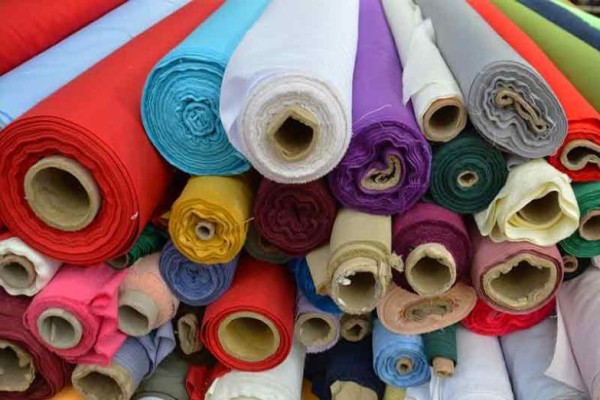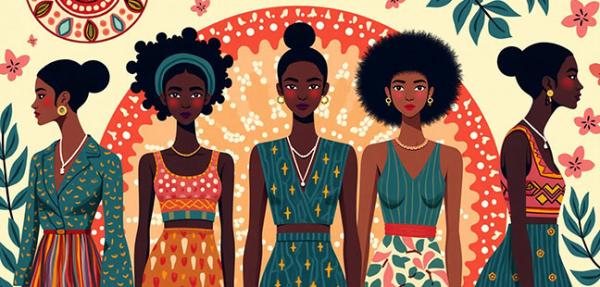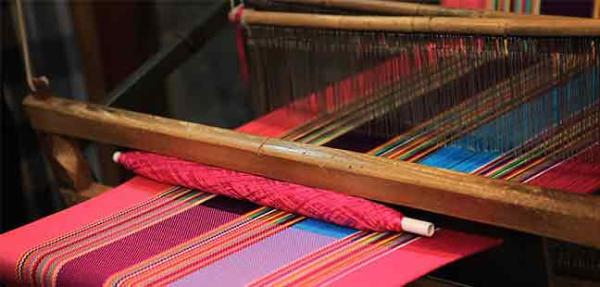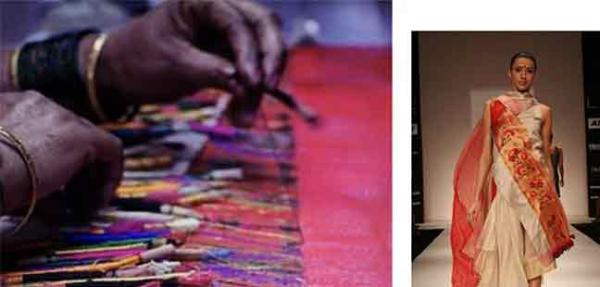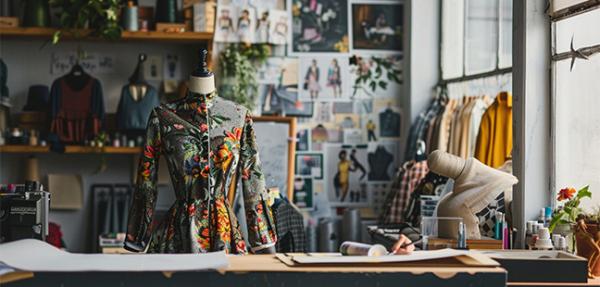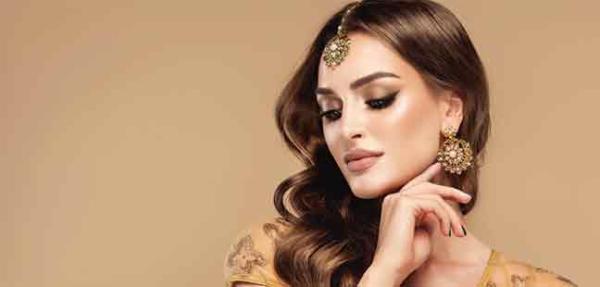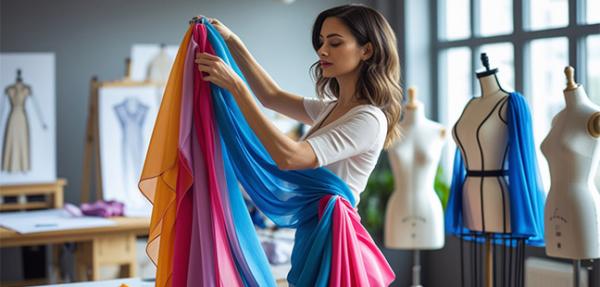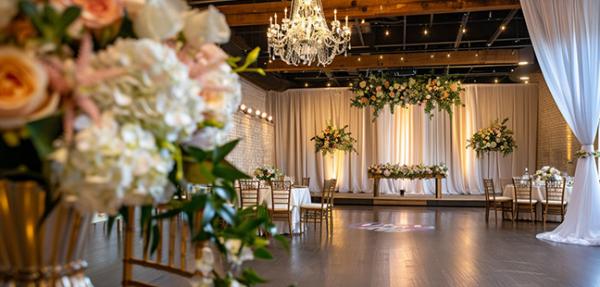How To Choose the Right Fabric for Your Fashion
- Pearl Academy Editorial Team
- Published 10-Mar-2025

Table of Contents:
Why Is Choosing the Right Fabric Important?
Types of Fabrics and Their Applications
How to Choose the Right Fabric?
Quick Expert Tips for Choosing the Right Fabric
Examples of Fabric Preferences in Different Sectors of India
Where to Find Quality Fabrics
Why Study Textile and Fashion Design?
Tips for Buying Fabrics Online
Conclusion
Choosing the right fabric is the cornerstone of creating stunning and functional fashion. It’s not just about aesthetics; the fabric defines the comfort, durability, and practicality of your garment. Whether you're crafting a lightweight summer dress or a structured winter coat, understanding how to select the perfect material can make all the difference.
Become future-ready with our Fashion Programs
Know MoreSelecting the perfect fabric is a critical step in designing fashionable and functional garments. Whether you're browsing a fabric store or shopping for fabric online, understanding the properties and applications of various fabric materials can transform your design from average to extraordinary.
This guide will help you navigate the world of fashion fabrics, connect you to Pearl Academy’s B.Des in Fashion Styling, M.Des. in Fashion Styling and Fashion Design teach you how to choose the best fabric cloth for your creations.
Why Is Choosing the Right Fabric Important?
The right fabric material impacts:
- Aesthetics: Enhancing the overall look and feel of your design.
- Comfort: Ensuring wearability, especially for garments like cotton fabric in summer.
- Durability: Prolonging the garment's lifespan.
- Functionality: Matching the fabric to the purpose, whether for activewear, formalwear, or casual wear.
By choosing wisely, you can create garments that resonate with both your design vision and your audience's needs.
Types of Fabrics and Their Applications
Understanding the characteristics of fashion fabrics is essential for making informed decisions. Here’s a breakdown of common fabric materials and their best uses:
| Fabric | Best Uses |
| Cotton Fabric | Everyday wear, breathable summer outfits |
| Silk | Formalwear, luxurious evening gowns |
| Denim | Casual jackets, jeans, sturdy outfits |
| Chiffon | Flowy dresses, scarves |
| Wool | Winter coats, sweaters |
| Linen | Relaxed summer wear, home textiles |
| Velvet | Party wear, chic blazers |
For those who love exploring options, a quick search for "fabric store near me" or browsing fabric online can provide endless inspiration.
How to Choose the Right Fabric?
Always start by considering the purpose of the garment—whether it’s casual, formal, or activewear. Evaluate the seasonal suitability, such as lightweight cotton for summer or warm wool for winter. Pay close attention to the fabric’s drape and texture, ensuring it complements your design and provides comfort. Whether shopping at a fabric store near you or browsing fashion fabrics online, take time to test durability, understand care requirements, and match the material to your aesthetic goals.
1. Understand the Purpose
The first step is identifying the garment’s purpose:
- Formalwear: Opt for elegant materials like silk or velvet.
- Casualwear: Choose lightweight options such as cotton fabric or linen.
- Activewear: Stretchy and moisture-wicking fabrics like polyester blends work best.
2. Consider Seasonal Needs
- Summer: Lightweight and breathable fabrics like cotton fabric online and linen are ideal.
- Winter: Opt for warm materials like wool or fleece.
3. Focus on Texture and Comfort
The texture of the fabric determines its comfort and suitability for the wearer. Touch and feel the fabric or read descriptions carefully when shopping at a fabric store or a textile shop.
4. Match Fabric to Design
For structured designs, choose heavier fabrics like denim. For flowy garments, opt for lighter fabrics like chiffon or georgette.
5. Test Durability
Before committing, ensure the fabric is durable and easy to maintain, especially if it’s for everyday use.
A well-chosen fabric can elevate even the simplest design into a masterpiece.
Those interested more in fabrics and designs can read the blog “What are the different types of fabric in Fashion Design?” to have a more detailed understanding of types, characteristics, and qualities of different fabrics.
Quick Expert Tips for Choosing the Right Fabric
Here are some quick expert tips for choosing the right fabric:
- Check Fabric Bias: Fabrics cut on the diagonal (bias) drape better and stretch naturally.
- Test Shrinkage: Pre-wash cotton or linen to avoid surprises after washing.
- Hold Against Light: Check for transparency, especially for layered or sheer designs.
- Stretch Test: Gently stretch to ensure it keeps its shape—ideal for fitted garments.
- Rub Test: Rub the fabric to see if it pills or frays easily.
- Drape It: Hang the fabric to observe how it falls for the final look.
- Static Test: Rub the fabric to check if it clings—important for synthetic materials.
- Colourfastness: Dab with a wet cloth to ensure the colour doesn’t bleed.
- Feel the Fabric: Touch it to assess comfort and quality.
- Go Sustainable: Choose eco-friendly options like organic cotton or recycled polyester.
These simple steps ensure you pick the best fabric for your designs!
Examples of Fabric Preferences in Different Sectors of India
India's diverse climatic conditions, cultural traditions, and growing fashion industry influence fabric preferences across various sectors. Below are examples of which fabrics are commonly preferred and why:
1. Fashion Industry
- Cotton: Dominates casual and summer wear due to its breathability and comfort. Cotton kurtas, sarees, and dresses are highly popular.
- Silk: Widely used in premium fashion for ethnic wear like sarees (Banarasi, Kanjeevaram), lehengas, and evening gowns.
- Chiffon and Georgette: Preferred for flowy, lightweight dresses, especially in women's formal and party wear.
- Denim: Popular for jeans and jackets, particularly among younger demographics.
2. Textile and Handloom Sector
- Handloom Cotton: Used for khadi clothing, reflecting sustainable and artisanal craftsmanship. Popular in eco-conscious fashion.
- Silk: Tassar silk from Jharkhand and Bhagalpuri silk from Bihar are widely used in ethnic garments.
- Wool: Pashmina wool from Kashmir is prized for its softness and warmth in shawls and winter wear.
- Jute: Found in bags, footwear, and eco-friendly accessories.
3. Sportswear and Activewear
- Polyester: Widely used due to its durability, moisture-wicking properties, and affordability. Ideal for gym wear and jerseys.
- Spandex (Lycra): Preferred for stretchability in leggings, yoga wear, and fitted garments.
4. Corporate and Formal Wear
- Blended Fabrics: Polyester-cotton and poly-wool blends are popular for formal suits, shirts, and trousers as they combine durability with a polished look.
- Linen: Frequently chosen for summer-friendly formal wear, especially in tropical regions of India.
5. Traditional Wear
- Silk: Essential for wedding sarees and festive attire across India. States like Tamil Nadu (Kanjeevaram), Karnataka (Mysore Silk), and Assam (Muga Silk) lead in silk production.
- Cotton: Preferred in states like West Bengal (for Dhakai Jamdani sarees) and Andhra Pradesh (for Pochampally ikat).
- Banarasi Silk: A staple for bridal wear in North India.
6. Home Furnishings
- Cotton: Common for bedsheets, curtains, and cushion covers due to its affordability and easy maintenance.
- Silk and Brocade: Found in luxurious upholstery and drapes for high-end home interiors.
- Jute: Eco-friendly and rustic, used in rugs, mats, and decorative items.
7. Healthcare and Hospitality
- Non-Woven Fabrics: Used for disposable surgical gowns, masks, and medical covers due to their hygiene benefits.
- Cotton: Preferred for patient wear and bed linens in hospitals because of its softness and hypoallergenic properties.
- Polyester Blends: Used in uniforms for staff due to their durability and resistance to frequent washing.
8. Automotive Industry
- Synthetic Fabrics: Polyester and nylon are used for seat covers due to their durability and stain resistance.
- Leather and Faux Leather: Preferred for premium vehicle interiors.
Fabric preferences in India vary widely across industries and regions, influenced by tradition, functionality, and climate. By mastering fabric selection, designers can cater to the unique demands of India’s diverse markets and create products that resonate with customers across industries.
Where to Find Quality Fabrics
Shopping for the right fabric cloth is easier than ever with a mix of physical and online options.
- Fabric Stores: Local fabric stores near me offer tactile experiences where you can feel and test fabrics.
- Fabric Online: Browse platforms offering a wide variety of fashion fabrics, from cotton to silk, for convenience and choice.
- Textile Shops: These are great for sourcing unique and high-quality fabric materials tailored to specific designs.
Why Study Textile and Fashion Design?
Choosing the right fabric is an art that goes beyond personal preferences. Pearl Academy’s B.Des in Fashion Styling, Fashion Design, and M.Des. in Fashion Styling equip students with the skills to:
- Experiment with fashion fabrics for innovative creations.
- Understand fabric construction and properties.
- Develop expertise in sourcing and designing with sustainable materials.
- Master the synergy between fabric and design to craft stunning garments.
These programs offer a perfect blend of creativity and technical knowledge, ensuring students are industry ready.
Tips for Buying Fabrics Online
When purchasing fabric online, consider these tips:
- Check Reviews: Ensure the retailer is reputable.
- Read Descriptions: Look for details about weight, drape, and texture.
- Order Samples: If possible, order swatches to test the fabric.
- Compare Prices: Evaluate multiple options to get the best deal.

Student Guidance Center: Our Counselors are Just a Click Away.
Conclusion
The right fabric is the backbone of any successful design. By understanding fabric properties, considering the garment's purpose, and exploring resources like fabric stores or fabric online, you can elevate your creations.
If you're passionate about designing costumes and want to turn your skills into a career, check out our guide on how to become a costume designer.
Pearl Academy’s empower aspiring designers with the knowledge and skills to make informed choices about fabric materials and craft exceptional designs.
Take the first step toward becoming a fashion visionary by mastering the art of fabric selection today! Whether you’re shopping at a textile shop, browsing fashion fabrics, or exploring cotton fabric online, your journey starts with choosing the perfect material.
Pearl Academy Editorial Team
Tags
- #Fashion
Pearl Admission Enquiry
Subscribe to Pearl Blogs
By clicking the "Subscribe" button, I agree and accept the privacy policy of Pearl Academy.
















